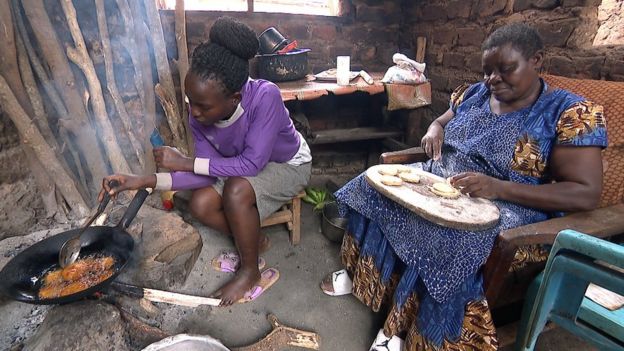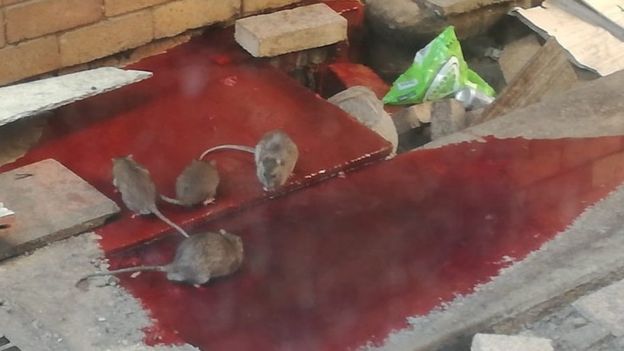Elon Musk, interviewed by Maureen Dowd https://t.co/8zxSHaJxBZ
— The New York Times (@nytimes) July 25, 2020
Elon Musk, Blasting Off in Domestic Bliss The billionaire space oddity on life with Grimes and Baby X, Trump, Tesla, tunnels, short shorts, stock surges, Facebook fumbles and everything else under the sun. .............. Grimes, the singer and artist, and Elon Musk, the rocket man and Tesla magnate, have an otherworldly romance. Which works out well since Mr. Musk wants to occupy Mars, in case malevolent robots or an engineered virus threaten Earth, and then die on Mars, just not on impact......... the prince of the internet, with memes about how he cries in old-school A.O.L. dial-up tones, X begins crying. .......... His personal life has been as vertiginous as his professional life: married three times, twice to the same woman, Talulah Riley, an actress who played a lethal sexbot on “Westworld.” He has six children. .......... A fan on her Reddit page described her as a hybrid of a fairy, a witch and a cyborg — pretty much Mr. Musk’s dream girl — and she has talked about going through a Wiccan phase in seventh grade. .......... “She’s one of the most unusual people I’ve ever met.” I wonder how it works with two such exotic birds. “We’ve had this debate of ‘Are you more crazy than me or am I more crazy than you?’” Mr. Musk said. .................. “If I’m not in love, if I’m not with a long-term companion, I cannot be happy.” ......... he hates “being in a big empty house, and the footsteps echoing through the hallway ........ Grimes and Mr. Musk made their public debut at the Met Gala in 2018 .......... Two famous people who thought they were crazy when they were little because there were so many off-the-wall ideas bursting out of their heads somehow found each other. ............. Intending to make a pun about Rococo Basilisk, he was Googling for an image of a basilisk with a rococo flair when he came across a 2015 music video for “Flesh Without Blood,” in which Grimes dresses as a rococo basilisk. ................. Grimes, who supported Bernie Sanders, had an influence on his recent decision to disencumber himself of his houses ............ in some ways, possessions weigh you down ............... In the Bay Area, for example from 2002 to 2017, I never owned a house and I was there half the week so I would either sleep at the factory or in a friend’s spare bedroom or on a couch or in a hotel. I did that for 15 years.” .............. He had thought about designing his own “aspirational masterpiece of a house,” but decided that it would take bandwidth away from his work “getting people to Mars and environmental sustainability and accelerating stable energy.” ........... there was a period from end of 2017 to about, I guess, the middle of last year, that was excruciating.” ............ Mr. Musk is so transparent that he seems heedless at times, in ways that make his investors nervous and his fan boys thrilled. ............. “The people who love him and the people who hate him are equally irrational,” said Ashlee Vance, Mr. Musk’s biographer. “It reminds me of Steve Jobs. It’s way beyond business or celebrity. It strikes me as religious, more than anything. His fans are acolytes.” ........ Mr. Musk is also like Mr. Jobs in his obsession with sleek design ........... “I’m going to take over the world. That’s going to be a super-crazy process. And therefore, if the roller coaster ride isn’t incredibly scary, I’m doing something wrong.” And after Mr. Jobs, boards learned their lesson about pushing out visionaries in favor of gray-haired corporate suits. ............ Mr. Musk is the first person in almost a century to come out of nowhere and create a car company with that much volume, showing other plodding car companies how electric cars can be cool, sexy and incredibly efficient. ............. a dark time when even masks and ventilators seemed beyond our manufacturing reach and when our government appears so incapable of getting coronavirus under control that the European Union has banned Americans from coming in. .......... “The rate of progress is too slow and the amount of years he has left is not enough, but I’m still glad he’s doing what he’s doing with Blue Origin," Mr. Musk said. .......... “I’m, like, not pro-Facebook. I don’t have a Facebook page. SpaceX and Tesla deleted their Facebook pages. SpaceX and Tesla do have an Instagram but I think it’s relatively harmless. So I think Zuckerberg and Sheryl Sandberg still have a lot of work to do to restore public trust in Facebook itself.” .................. In his spare time, Mr. Musk is working on tunnels that would alleviate urban traffic jams, an idea he dreamed up while stuck in L.A. traffic; spaceports that could catapult you from New York to Shanghai in 39 minutes; a hyperloop that would let you scoot between D.C. and New York in half an hour; a neural net that would be sewn or lasered into brains to fuse us with computers, which would potentially allow us to compete with superintelligent rogue A.I. and could also restore the ability to walk, hear, speak or see; and solar initiatives and lightweight lithium batteries to make mitigating climate change cheaper and more accessible........... insists he is an engineer, not a businessman or investor. “I tend to bite off more than I can chew and then just sit there with chipmunk cheeks.” ............ “I love going to a restaurant that’s doing something special with food,” Mr. Musk said, “and I think really if you are not appreciating this, then you are not appreciating one of the finest things about living.” .......... the lords of the cloud who were supposed to improve our lives were carelessly harvesting our data and allowing themselves to be disinformation factories. ......... Mr. Musk was painted as a Luddite, “hysterical” in the estimation of Mr. Zuckerberg, for what his friends called “Elon’s crusade,” his proselytizing that we should figure out safety features for A.I. before it gets smarter than us. .............. “Nobody expects the Spanish Inquisition.” ......... “My assessment about why A.I. is overlooked by very smart people is that very smart people do not think a computer can ever be as smart as they are,” he told me. “And this is hubris and obviously false.” .............. we’re headed toward a situation where A.I. is vastly smarter than humans and I think that time frame is less than five years from now. But that doesn’t mean that everything goes to hell in five years. It just means that things get unstable or weird.” ........... He said his “top concern” is DeepMind, the secretive London A.I. lab run by Demis Hassabis and owned by Google. “Just the nature of the A.I. that they’re building is one that crushes all humans at all games,” he said. “I mean, it’s basically the plotline in ‘War Games.’” ........... objectively, things will be weird when the computers are way smarter than humans .......... lives out loud on Twitter with 37 million followers ............ it’s good anyway to take a few breaks from Twitter and not be on there 24 hours a day. Twitter can mess with your mind .......... He said he rounded that number up from $419 in part to amuse Grimes — 4/20 is the stoner’s holiday. .......... Musk said he’s not a big pot smoker because it makes you too logy. .............. The herculean nature of turning Tesla into a well-oiled machine, he said, has not been “well appreciated.” ........... “The logistics are mind-boggling, trying to deliver 7,000 cars per week in 40 different countries" ........... “I think the reality of Covid is that it is dangerous if you’re elderly and have pre-existing conditions,” he said, adding: “It absolutely makes sense to have a lockdown if you’re vulnerable, but I do not think it makes sense to have a lockdown if you’re not vulnerable.” He said he may have had Covid in January and he wears a mask on the factory floor. ............... The Tesla-loving liberals were horrified again by a May tweet, “Take the red pill," an allusion to the pill Keanu Reeves takes in “The Matrix” that lets him see the truth. .......... The red-pill image has become linked with the fringe right and men’s rights activism. It blew up when Ivanka Trump retweeted it and said “Taken!” and when Lilly Wachowski, a creator of “The Matrix,” then cursed out both Mr. Musk and Ms. Trump. (Even Grimes’s mother, a Canadian journalist, tweeted her dissatisfaction.) ............. The president has called Mr. Musk “one of our great geniuses,” likening him to Thomas Edison. .............. I would say the amount of thought that the general public puts into politics is quite low. They’re mostly thinking about their day and their direct relationships and their work.” .................. He notes that he was such a fervent Obama supporter that he once waited in line for six hours to shake Obama’s hand when he was running, adding, “the poor guy was so tired at the end of the night.” ............. Despite the fact that he wants someone in the White House who has his stuff together, he encouraged Kanye West’s bid for the presidency. ....... while they see each other about once every six months, they text “fairly often.” ....... “I’ve done my best to convince him that 2024 would be better than 2020” .......... a bizarre Twitter thread in which he contended that his life was like the horror movie “Get Out,” Kim Kardashian put out a statement talking about her husband’s struggles with bipolar disorder.

Great job by @elonmusk in agreeing to build, in TEXAS, what is expected to be the largest auto plant anywhere in the world. He kept his word to me. Texas & @Tesla are big winners. MADE IN THE USA!
— Donald J. Trump (@realDonaldTrump) July 24, 2020
If you succeed within a system it’s hard to see how fucked up it is.
— Andrew Yang🧢🇺🇸 (@AndrewYang) July 25, 2020















